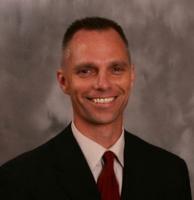
Since joining WJE in 1990, John Pearson has worked on a broad range of assignments involving stadiums, parking garages, buildings, building components, masonry and stone facades, bridges, and heavy machinery. His work has focused on the testing and instrumentation of structures and structural components. Mr. Pearson has developed and installed numerous computer-controlled data acquisition systems, which involved monitoring fatigue stresses in a dredge and a die-cast press and vibrations and displacements in buildings and bridges. Mr. Pearson has extensive experience in performing laboratory tests on various structural materials and elements, including post-installed mechanical and adhesive anchorage systems.
Mr. Pearson has coauthored papers and presented on structure response during the reconstruction of an underground utility, soil anchor testing and behavior, fatigue monitoring of a barge mounted excavator, full-scale load testing of a post-tensioned elevated roadway, post-installed concrete anchorage testing and evaluation, and bearing failure of a passenger train elevated bridge.
First said decades ago, “Ask the structure” has been the straightforward advice by Wiss, Janney, Elstner founders that guides WJE today to solve problems of the built world. A multidisciplinary team of engineers, architects, material scientists and technicians work together to provide reliable answers to questions about structural components, construction materials, and architectural systems.
One of the unique tools in the WJE toolbox used to help solve problems is the Janney Technical Center (JTC). The JTC is a 45,000 square foot construction material-based testing laboratory. It can accommodate virtually any construction-related and metallurgical testing, or research project, from the performance evaluation of structural and architectural systems or the fatigue and fracture testing of construction materials to accelerated weathering tests or specialized physical and chemical testing of materials. The JTC’s capabilities range from scanning electron microscopy with 100,000x magnification to full-scale load testing with virtually unlimited capacity in our 8,000-square-foot structural test lab. The JTC also maintains state-of-the-art equipment for field evaluations, structural monitoring, instrumentation, and nondestructive testing for use when we needed to diagnose the problem at its source.
This presentation will focus on a few projects where we asked the structure by instrumenting and testing structural components to diagnose the problems and developed reliable, long-term solutions.
Amber Samaniego
a2samaniego@ucsd.edu
